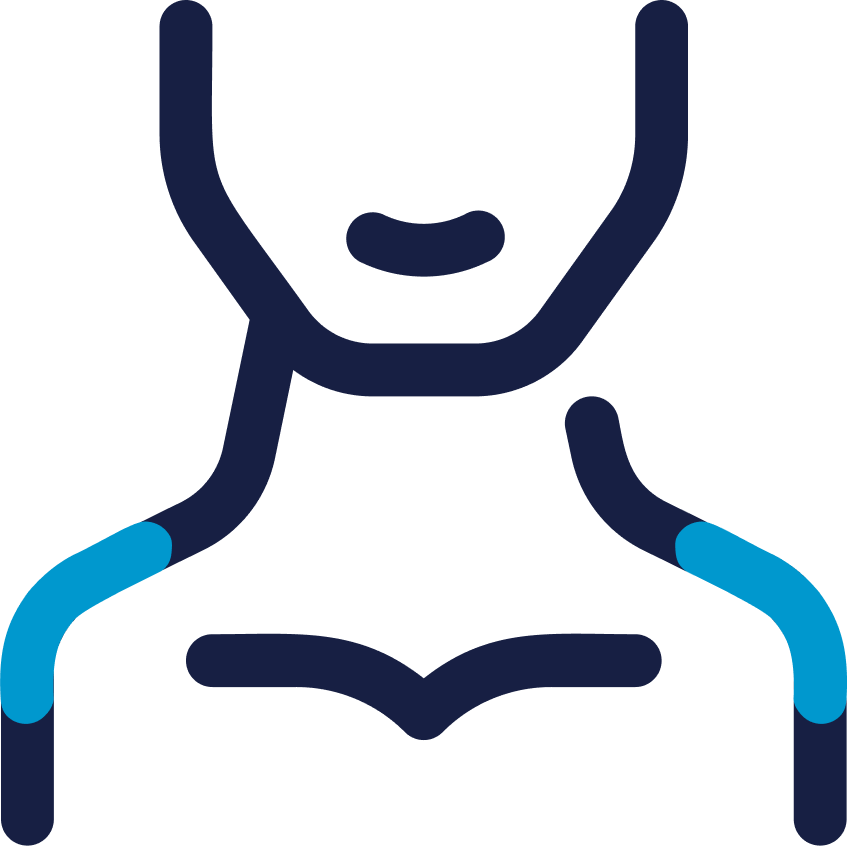
- Specialty Procedures
- /Shoulder

Shoulder Arthroscopy has been performed since the 1970s and has continued to improve yearly as new instruments and techniques are developed. It has made diagnosis, treatment, and recovery from surgery easier and faster than was once thought possible.
During Shoulder Arthroscopy, your surgeon inserts a small camera, called an arthroscope, through very small incisions, into the shoulder joint. Images from the camera are fed to a video monitor, which your surgeon uses to guide miniature surgical instruments. Because the arthroscope and surgical instruments are thin, resulting in smaller incisions than standard open surgery, patients experience less pain and a shorter recovery time. Common arthroscopic shoulder procedures include:
You may be a candidate for Shoulder Arthroscopy if you have a painful condition that has not responded to nonsurgical treatment such as physical therapy or medications intended to reduce inflammation allowing injured tissues to heal. Inflammation is one of your body's normal reactions to injury or disease. In an injured or diseased shoulder joint, inflammation causes swelling, pain, and stiffness.
Injury, overuse, and age-related wear and tear are responsible for most shoulder problems. Shoulder arthroscopy may relieve painful symptoms of many issues that damage the rotator cuff tendons, labrum, articular cartilage, and other soft tissues surrounding the joint.
Once in the operating room, your surgeon will position you so that it is easy to adjust the arthroscope and have a clear view of the inside of your shoulder. The two most common patient positions for arthroscopic shoulder surgery are the beach chair (semi-seated, similar to sitting in a reclining chair) and the lateral decubitus (lying on the side when on the operating table). While each position has some slight advantages, your surgeon selects the position based on the procedure being performed and their training.
Once you are positioned, the surgical team will proceed with hair removal, if needed, and then apply an antiseptic solution over your shoulder to sanitize the surgical field. Your shoulder and arm will then be covered with sterile drapes, and often your forearm is placed in a device to hold it steady.
Fluid is typically injected into the shoulder to inflate the joint, making it easier to see all the structures of your shoulder through the arthroscope. Next, a puncture about the size of a buttonhole is made in your shoulder for the arthroscope. As fluid flows through the arthroscope, the view is kept clear, and the bleeding is controlled, allowing your surgeon to see the inside of your shoulder and any damage present.
As the injury or issue is identified, additional instruments are inserted through separate incisions to treat the problem. Your incisions are typically closed with stitches or small Band-Aids called steri-strips and then covered with a large, soft bandage.
After the procedure, you will be taken to the recovery room for approximately one to two hours before being discharged home. Nurses will monitor your responsiveness and provide pain medication if needed. You will need someone to drive you home and stay with you for at least the first night.
Pain and discomfort are likely for several weeks post-op, and the more extensive the procedure, the likelihood that it takes longer for the pain to subside. Pain and swelling may be relieved with ice; your surgeon may prescribe pain medicine if needed.
You should be able to replace your large bandage with simple Band-Aids a few days after surgery. Once your wounds are no longer draining, you may shower. However, you should still refrain from soaking or scrubbing the surgical site. More than likely, your surgeon will instruct you to wear a sling or special immobilizer to protect your shoulder and discuss how long you will need to immobilize your shoulder in the device.
While recovering from a Shoulder Arthroscopy is often faster than open surgery, it may still take several weeks or months to heal completely.

